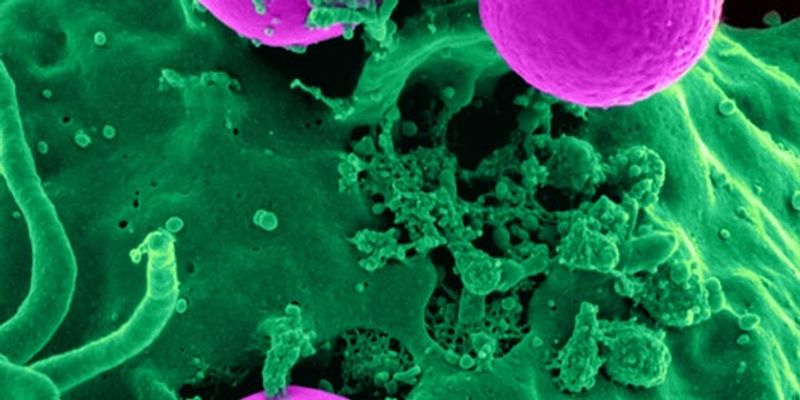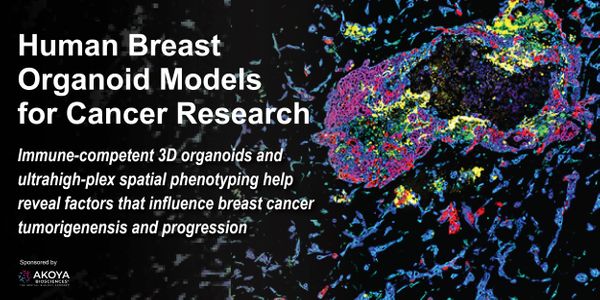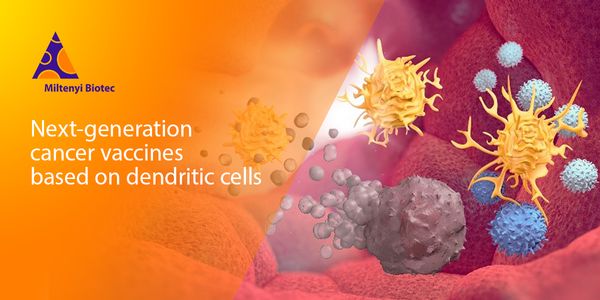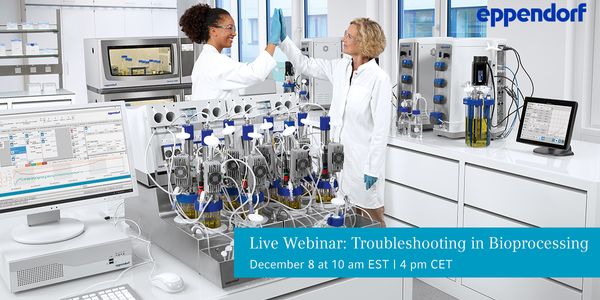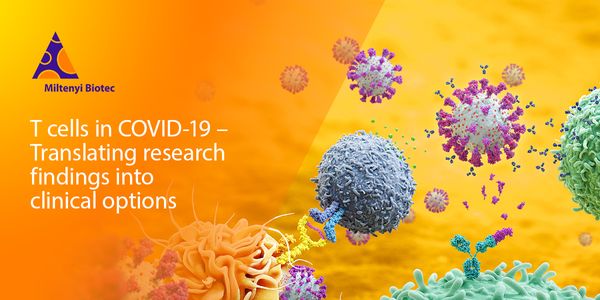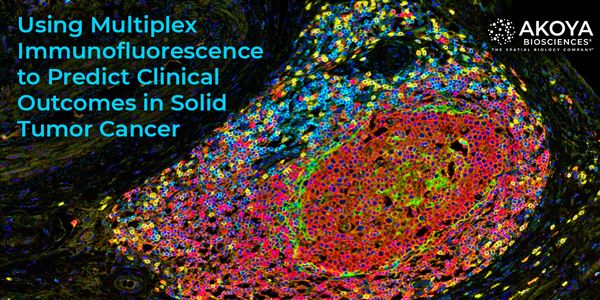Cell
Cell: is the smallest structural and functional unit of an organism, typically microscopic and consisting of cytoplasm and a nucleus enclosed in a membrane. Microscopic organisms typically consist of a single cell, which is either eukaryotic or prokaryotic.
-
MAR 01, 2022 | 9:00 AMDate: March 1, 2022 Time: 9:00am (PST), 12:00pm (EST) Dr. David F Keren currently serves as a Professor of Pathology at the University of Michigan (Michigan Medicine). Dr. Keren received his...MAR 01, 2022 | 8:00 AMDate: March 01, 2022 Time: 08:00am (PST), 11:00am (EST) Histology laboratorians in the research world move fast, but those who perform cryosectioning know that these particular tissues requi...FEB 24, 2022 | 9:00 AMDate: February 24, 2021 Time: 9:00am (PST), 12:00pm (EST) Cytokine profiling is a valuable tool used in preclinical research for monitoring an immune response and cell signaling pathways dur...Current drug discovery workflows are inefficient. 90% of therapeutic agents reaching clinical trials fail, predominantly because traditional laboratory experiments fail to adequately predict...Speaker: Audrey Dubourg, MSc, PhDPresented at: Drug Discovery & Development Virtual Event Series 2022
The quest for alternatives to animal safety testing has fueled the development, characterization, and validation of many new technologies. There have been advances in cell and tissue models...
Genetically engineered cellular models are an integral part of the drug discovery process from early discovery through clinical biomanufacturing. The various applications of these cellular m...
Speaker:
Stacey Ward, PhD
Flow cytometry is an essential tool for in-process control and release testing of cell therapy products. Standardization of these analytical assays is critical for the success of the manufac...
Speaker:
Emily Bozek, MSc
Cancer still accounts for nearly 1 in every 4 deaths worldwide. New immunotherapies have the power to induce durable responses in patients with fatal cancers, but only a small percentage of...
Speaker:
Hans-Dieter Zucht, PhD
Presented at: Drug Discovery & Development Virtual Event Series 2022
Sponsored By: Luminex - A DiaSorin Company
Sponsored By: Luminex - A DiaSorin Company
FEB 01, 2022 | 8:00 AM
Interested in learning more about assay design for primers and probes? Join us for this special Guardian of Your Science “Ask the Expert” webinar, hosted by field applications sc...
Speaker:
Ben Avery
Presented at: Guardians of Your Science, Ask the Expert Webinar Series
Sponsored By: Thermo Fisher Scientific
Sponsored By: Thermo Fisher Scientific
FEB 01, 2022 | 8:00 AM
Date: February 01, 2021 Time: 08:00am (PST), 11:00am (EST) The Design–Generate–Test–Learn (DGTL) cycle represents an efficient approach to biological engineering, from sing...
JAN 11, 2022 | 8:00 AM
Date: January 11, 2022 Time: 08:00am (PST), 11:004am (EST) Connectivity of laboratory equipment is progressing rapidly. While it started with the possibility to export data from the equipmen...
DEC 08, 2021 | 11:00 AM
Date: December 8, 2021 Time: 11:00am (PST), 2:00pam (EST) Breast cancer is the most common type of cancer and the leading cause of cancer deaths for women. Despite considerable ongoing resea...
DEC 08, 2021 | 9:00 AM
Date: December 9, 2021 Time: 9:00am (PDT), 12:00am (EDT) CRISPR editing has revolutionized plant breeding, and the MAD7 CRISPR nuclease developed by InscriptaTM is democratizing access to CR...
DEC 08, 2021 | 8:00 AM
Date: December 08, 2021 Time: 8:00am (PDT), 11:00am (EDT) Learn how enrichment of primary dendritic cell (DC) subsets and sustainable DC manufacturing advances DC-based cell therapies. In th...
DEC 08, 2021 | 7:00 AM
Date: December 08, 2021 Time: 7:00am (PDT), 10:00am (EDT) Successful bioprocessing is complex and depends on many factors. From the selection of the expression host, media composition, the p...
DEC 07, 2021 | 10:00 AM
Date: December 07, 2021 Time: 10:00am (PST) The RNAscope™ technology allows high sensitivity and spatial resolution providing pivotal single-cell information to gain better insights in...
DEC 07, 2021 | 9:00 AM
Date: December 7, 2021 Time: 9:00am (PST), 12:00pm (EST) The severe acute respiratory syndrome coronavirus 2 (SARS-CoV-2) has infected more than...
DEC 07, 2021 | 8:00 AM
Date: November 7, 2021 Time: 8:00am (PDT), 11:00am (EDT) Analysis of SARS-CoV-2–specific T cells is important to understand their role during acute disease and in long-term protection...
DEC 02, 2021 | 8:00 AM
Date: December 2, 2021 Time: 8:00am (PDT), 11:00am (EDT) Effective immunotherapy of pancreatic ductal adenocarcinoma (PDAC) is hampered by the lack of suitable tumor-specific antigens. To ad...
DEC 01, 2021 | 9:00 AM
Date: December 1, 2021 Time: 9:00am (PDT), 12:00pm (EDT) The enumeration and analysis of blood cells with automated haematology analysers have significantly improved in recent years due to a...
DEC 01, 2021 | 8:00 AM
Date: December 01, 2021 Time: 8:00am (PDT), 11:00am (EDT) Discover how taking a holistic approach can help simplify and improve your cell culture media process workflows. In a discussion wit...
DEC 01, 2021 | 7:00 AM
Date: December 01, 2021 Time: 7:00am (PST), 10:00am (EST) In the era of immuno-oncology, there is a growing need for the identification of new biomarkers predictive for sensitivity to anti-P...
NOV 30, 2021 | 11:00 AM
Date: November 30, 2021 Time: 11:00am (PDT), 2:00pm (EDT) In the recent years, measurable residual disease (MRD) assessment on multiple myeloma patients has gained increasing relevance. After...
Date: November 18, 2021 Time: 9:00am (PDT), 12:00pm (EDT) AAVs are attractive viral vectors for gene therapy due to their lack of pathogenicity, low immunogenicity, broad tropism and persist...
MAR 01, 2022 | 9:00 AM
Date: March 1, 2022 Time: 9:00am (PST), 12:00pm (EST) Dr. David F Keren currently serves as a Professor of Pathology at the University of Michigan (Michigan Medicine). Dr. Keren received his...
MAR 01, 2022 | 8:00 AM
Date: March 01, 2022 Time: 08:00am (PST), 11:00am (EST) Histology laboratorians in the research world move fast, but those who perform cryosectioning know that these particular tissues requi...
FEB 24, 2022 | 9:00 AM
Date: February 24, 2021 Time: 9:00am (PST), 12:00pm (EST) Cytokine profiling is a valuable tool used in preclinical research for monitoring an immune response and cell signaling pathways dur...
Current drug discovery workflows are inefficient. 90% of therapeutic agents reaching clinical trials fail, predominantly because traditional laboratory experiments fail to adequately predict...
Speaker:
Audrey Dubourg, MSc, PhD
Presented at: Drug Discovery & Development Virtual Event Series 2022
The quest for alternatives to animal safety testing has fueled the development, characterization, and validation of many new technologies. There have been advances in cell and tissue models...
Genetically engineered cellular models are an integral part of the drug discovery process from early discovery through clinical biomanufacturing. The various applications of these cellular m...
Speaker:
Stacey Ward, PhD
Flow cytometry is an essential tool for in-process control and release testing of cell therapy products. Standardization of these analytical assays is critical for the success of the manufac...
Speaker:
Emily Bozek, MSc
